Manufacturer: Zotac Gaming
UK price (as reviewed): £1,223.99 (inc. VAT)
US price (as reviewed): $1,199.99 (exc. tax)
Nvidia’s forward-looking Turing architecture debuted last week in the RTX 2080 Ti and RTX 2080 Founders Edition cards. With £1,100 and £750 price tags respectively, they’re evidently geared towards enthusiasts with deep wallets and who believe in the promise of the ray tracing and deep learning hardware onboard. However, such pricing puts Nvidia’s board partners in a tricky position, especially as the new Founders Edition design is hard to fault.
The reasons for going third-party remain the same with RTX cards: Maybe you have specific aesthetic tastes to fulfil (RGB!), or you want the lower temperatures and better cooling performance typically offered by bulkier coolers, or perhaps you’re keen to maximise frame rates and want a pre-overclocked GPU. Trouble is, the new FE cards are better looking, quieter, and cooler than they’ve ever been, and they even ship pre-overclocked. And so far, they also seem to be the cheapest entry points to both the RTX 2080 and RTX 2080 Ti, at least for now. As we said, a tricky position, and an unenviable one, but one upshot is that we may see more exciting designs and innovation emerge as companies seek to differentiate themselves further from the “baseline”, which has now been raised.

With that in mind, we have our first partner card to review, the Zotac Gaming GeForce RTX 2080 Ti Amp. Zotac Gaming is a creatively named sub-brand of Zotac, which has delivered some impressive cards in the past. When it comes to the RTX 2080 Ti, it currently has two SKUs to its name, the Triple Fan and the Amp, differentiated only by the factory overclock applied to the GPU of the Amp. The card ships with a boost clock of 1,665MHz, roughly eight percent more than the reference speed but only 30MHz (sub two percent) higher than the Founders Edition, with which it shares a 260W TDP. The 11GB GDDR6 memory remains at the default speed of 14Gbps.
At over 300mm long, the RTX 2080 Ti Amp is pretty monstrous, although this is the norm for top-end cards these days, and most cases are designed with such dimensions in mind. With a ‘2.5-slot’ cooler, it will also occupy three expansion slots.
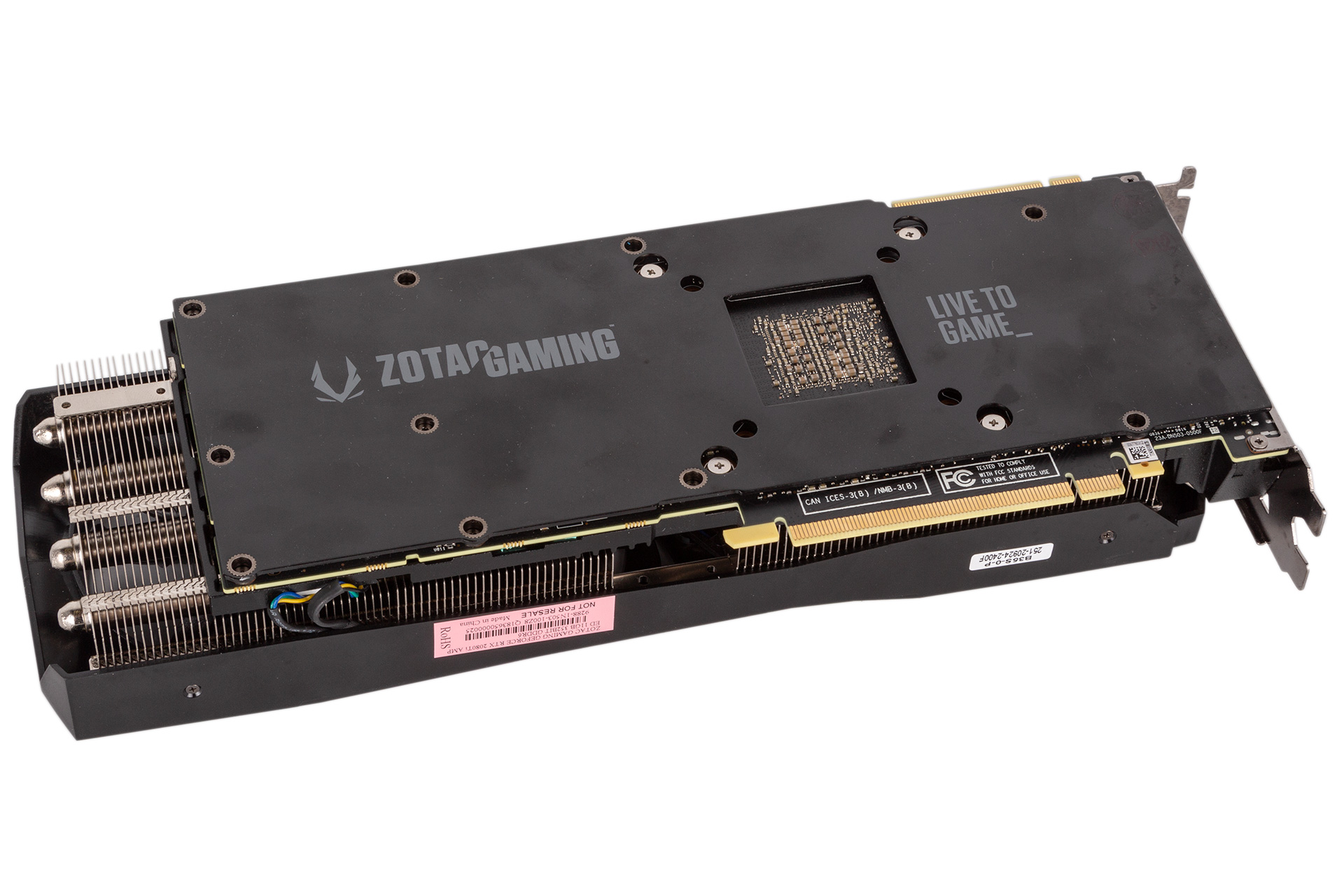
Glossy black plastic is rarely a hallmark of quality, yet here it is on a £1,200+ graphics card as part of the plastic shroud. Build quality, therefore, is a step down from the Founders Edition units, although you do at least get a metal backplate. Since the cooler overhangs the PCB quite dramatically, the aesthetic benefit of this is arguably compromised to a degree. On a similar note, Zotac doesn’t supply a cover for the NVLink connector used for SLI. You may also have to contend with a sagging GPU (even in a reinforced PCIe slot), as Zotac doesn’t provide anything to help prop the unit up and maintain delicious straight lines and right angles.
Minus the little gold-tinted bits in the middle of each fan, the Zotac Gaming RTX 2080 Ti Amp is very colour-neutral since it’s clad all in black, and this seems sensible since the card includes ‘Spectra’ RGB lighting, albeit only for the logo along the top edge. Sadly, we were unable to unlock any customisation functionality using Zotac’s Firestorm app at the time of testing, so it remained a static blue, but we expect this will be fixed with an update soon.
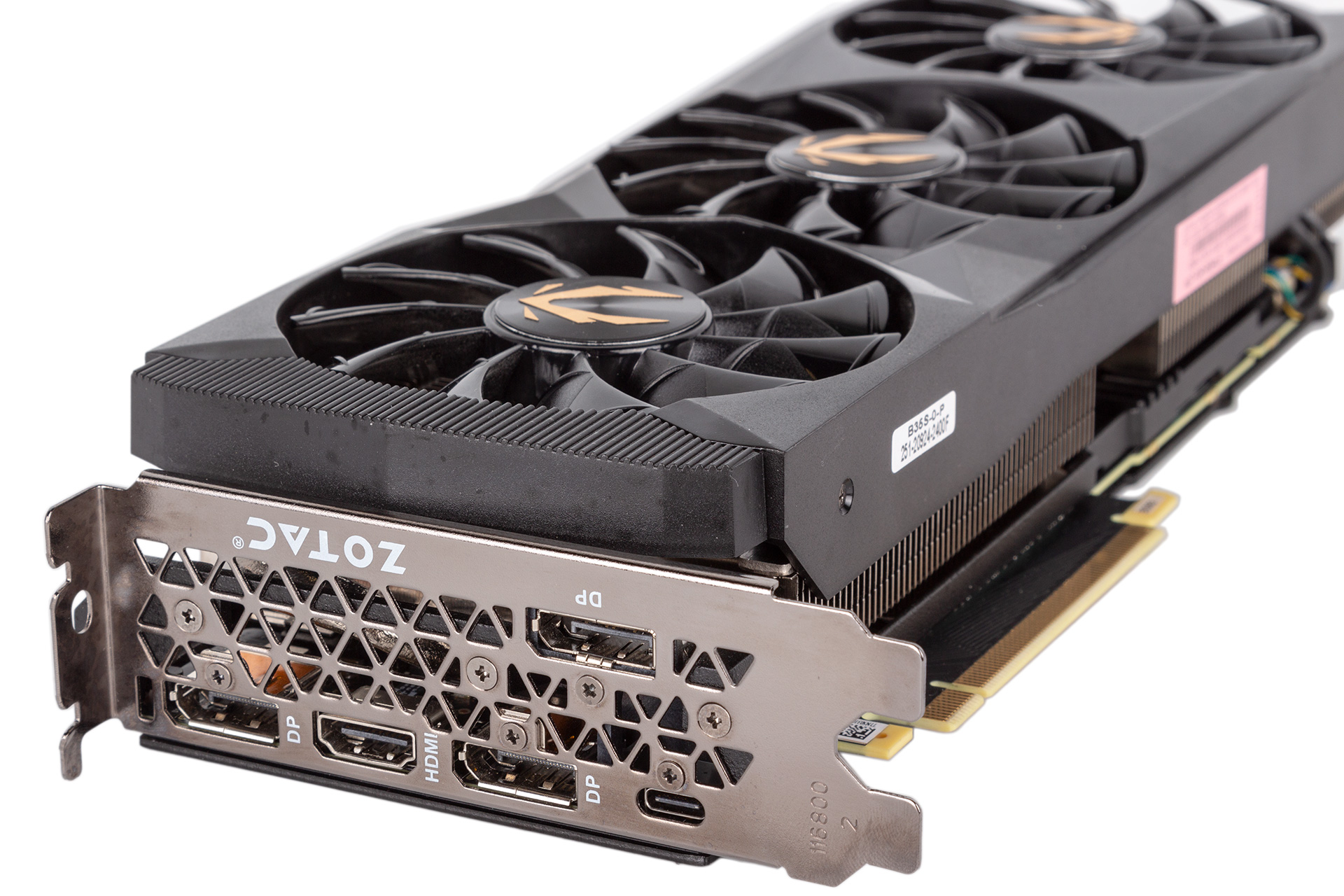
The display outputs and power inputs remain the same as they are on the Founders Edition, which is fine since there’s no reason to change either. Zotac does supply a pair of dual-six-pin to single-eight-pin PCIe adaptors, but they’re ugly and unbraided.
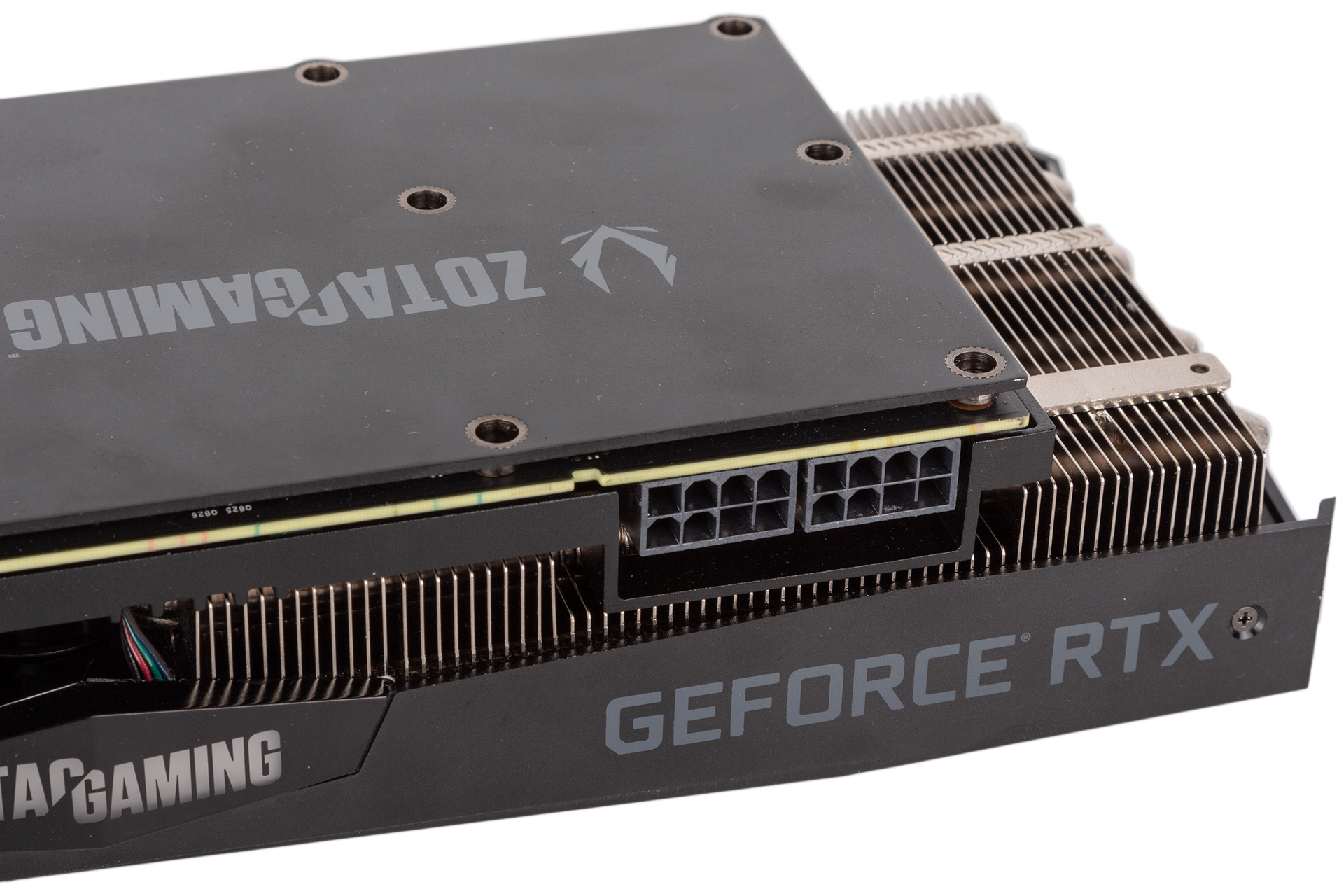
Zotac uses a trio of 90mm, 11-blade fans to push air over its monster cooler, all spinning in one direction. It boasts of using a new design here and ‘multi-stage’ blades that come with the usual promises related to airflow generation and direction – the proof of course will be in the pudding. Active Fan Control, meanwhile, refers to the fact that the fans can spin at independent rates should the automatic control deem it best. Sadly, though, the more desirable feature of fans that switch off when the GPU is under low load is not present.

The cooler itself comprises a copper baseplate that feeds five 8mm copper heat pipes with nickel plating, four of which extend straight into the secondary aluminium fin stack. While the card is big, most of that space is actually occupied by metal, so it’s not wasted. Thankfully, a full metal contact plate is also fitted, and this plus a series of thermal pads sees to it that the VRM components and GDDR6 modules are all directly cooled, although there are no thermal pads connecting the backplate to the PCB, so its cooling potential is limited.
A certain graphics card reviewer who shall remain nameless has reached the dear old age of 28 recently, so you’ll have to forgive him for failing to take a photo of the PCB (or maybe deleting it); his memory just isn’t what it used to be. Nevertheless he did remember to note down that the card uses the same 13+3 phase power design as the Founders Edition - it's pretty much the same PCB on both.
The Zotac RTX 2080 Ti Amp ships with a default two-year warranty; it’s a shame this hasn’t been upgraded to three years to match Nvidia’s in-house efforts, but thankfully the card qualifies for Zotac’s extended warranty programme. If you register the card with Zotac within 28 days of purchase, it extends all the way to a nice five years.
Specifications
- Graphics processor Nvidia GeForce RTX 2080 Ti, 1,350MHz (1,665MHz boost)
- Pipeline 4,352 stream processors, 544 Tensor Cores, 68 RT Cores, 272 texture units, 88 ROPs
- Memory 11GB GDDR6, 14Gbps effective
- Bandwidth 616GB/sec, 352-bit interface
- Compatibility DirectX 12, Vulcan, OpenGL 4.5
- Outputs 3 x DisplayPort 1.4a, 1 x HDMI 2.0b, 1 x USB-C VirtualLink
- Power connections 2 x eight-pin PCIe, top-mounted
- Size 308mm long, 113mm tall, triple-slot
- Warranty Two years (user-extendable to five years)

MSI MPG Velox 100R Chassis Review
October 14 2021 | 15:04

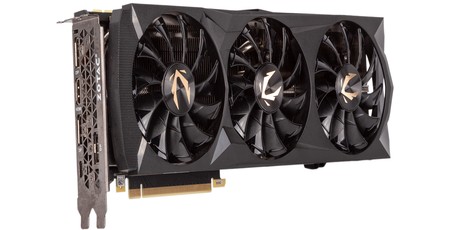
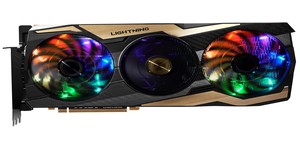
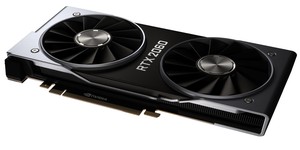
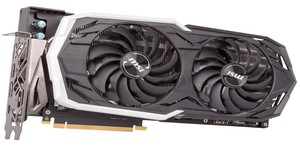




Want to comment? Please log in.